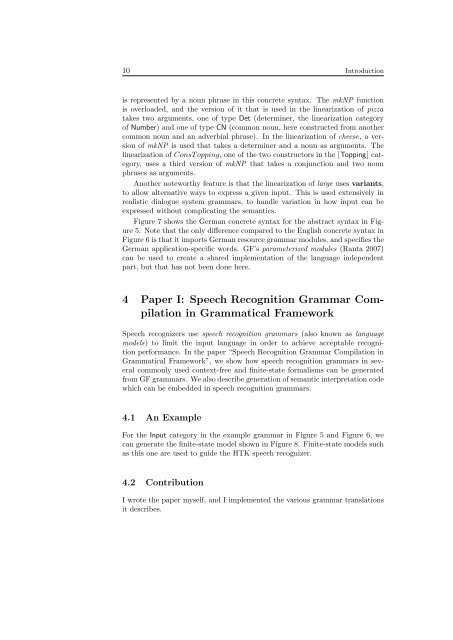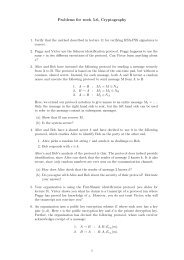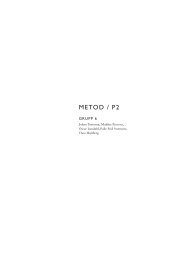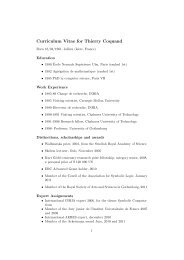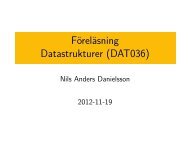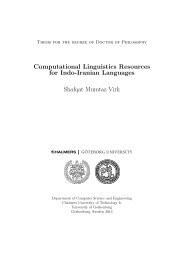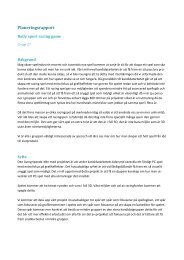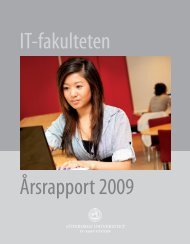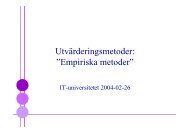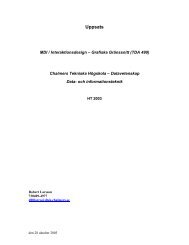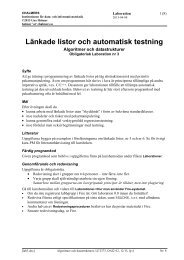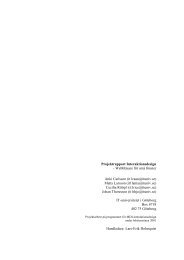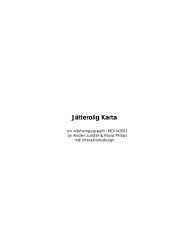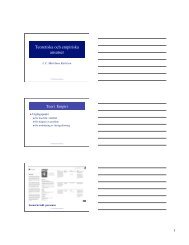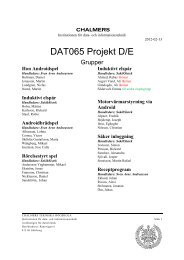Compiling Grammar-based Speech Application ... - CiteSeerX
Compiling Grammar-based Speech Application ... - CiteSeerX
Compiling Grammar-based Speech Application ... - CiteSeerX
Create successful ePaper yourself
Turn your PDF publications into a flip-book with our unique Google optimized e-Paper software.
10 Introduction<br />
is represented by a noun phrase in this concrete syntax. The mkNP function<br />
is overloaded, and the version of it that is used in the linearization of pizza<br />
takes two arguments, one of type Det (determiner, the linearization category<br />
of Number) and one of type CN (common noun, here constructed from another<br />
common noun and an adverbial phrase). In the linearization of cheese, a version<br />
of mkNP is used that takes a determiner and a noun as arguments. The<br />
linearization of ConsT opping, one of the two constructors in the [Topping] category,<br />
uses a third version of mkNP that takes a conjunction and two noun<br />
phrases as arguments.<br />
Another noteworthy feature is that the linearization of large uses variants,<br />
to allow alternative ways to express a given input. This is used extensively in<br />
realistic dialogue system grammars, to handle variation in how input can be<br />
expressed without complicating the semantics.<br />
Figure 7 shows the German concrete syntax for the abstract syntax in Figure<br />
5. Note that the only difference compared to the English concrete syntax in<br />
Figure 6 is that it imports German resource grammar modules, and specifies the<br />
German application-specific words. GF’s parameterized modules (Ranta 2007)<br />
can be used to create a shared implementation of the language independent<br />
part, but that has not been done here.<br />
4 Paper I: <strong>Speech</strong> Recognition <strong>Grammar</strong> Compilation<br />
in Grammatical Framework<br />
<strong>Speech</strong> recognizers use speech recognition grammars (also known as language<br />
models) to limit the input language in order to achieve acceptable recognition<br />
performance. In the paper “<strong>Speech</strong> Recognition <strong>Grammar</strong> Compilation in<br />
Grammatical Framework”, we show how speech recognition grammars in several<br />
commonly used context-free and finite-state formalisms can be generated<br />
from GF grammars. We also describe generation of semantic interpretation code<br />
which can be embedded in speech recognition grammars.<br />
4.1 An Example<br />
For the Input category in the example grammar in Figure 5 and Figure 6, we<br />
can generate the finite-state model shown in Figure 8. Finite-state models such<br />
as this one are used to guide the HTK speech recognizer.<br />
4.2 Contribution<br />
I wrote the paper myself, and I implemented the various grammar translations<br />
it describes.


